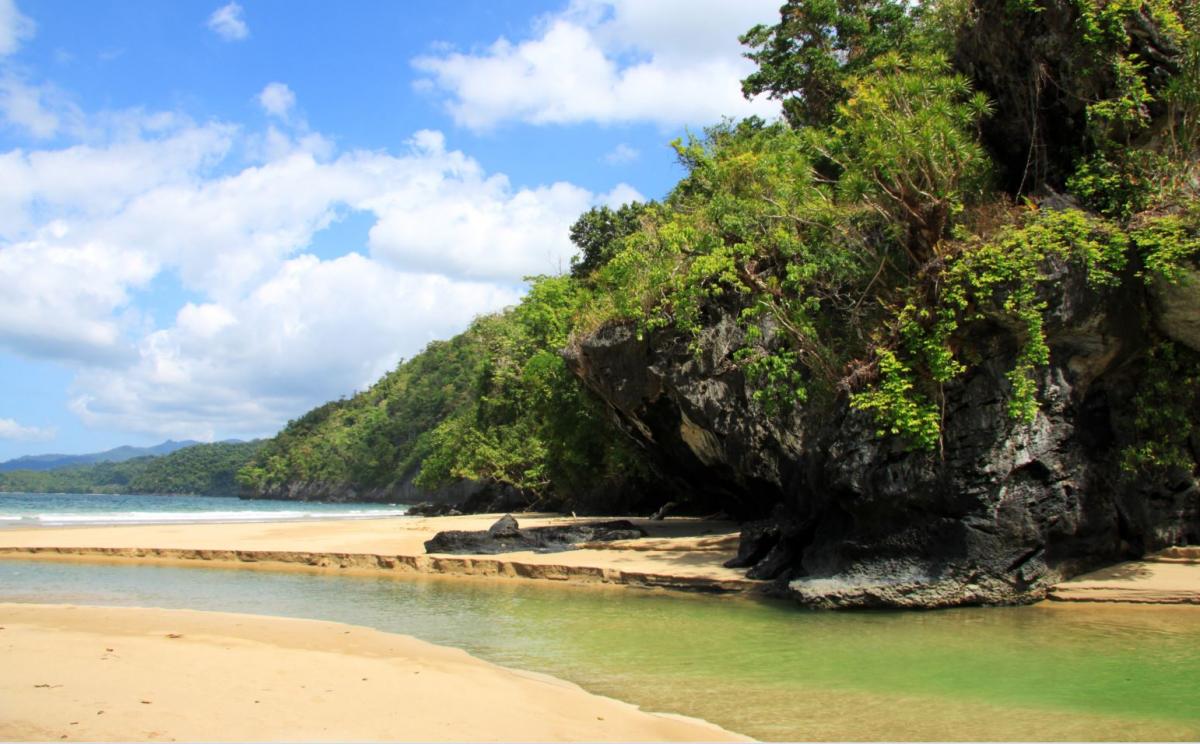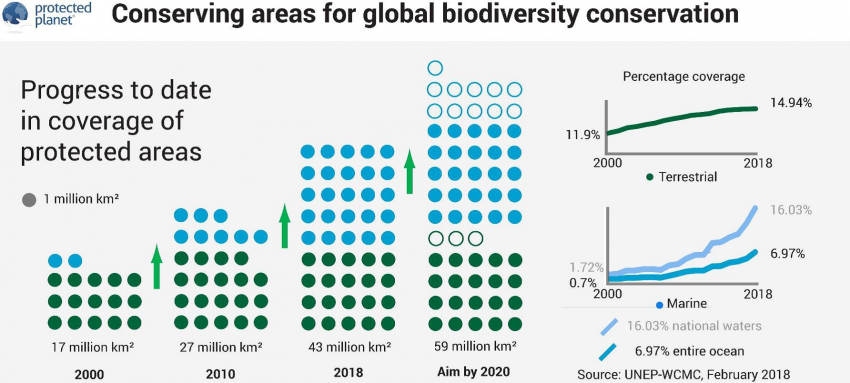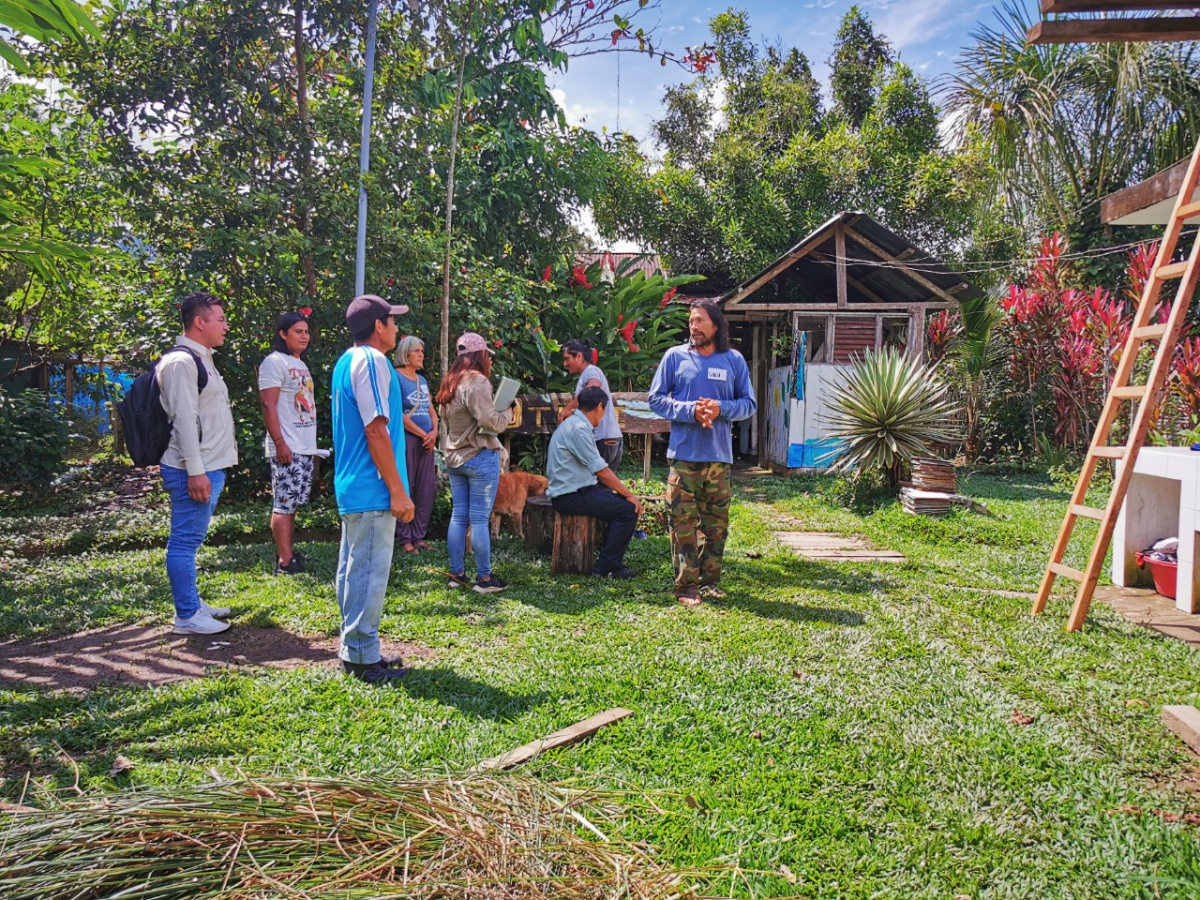Space for Nature Symposium: what's next?
By Natasha Ali and Trevor Sandwith
On 22 – 23 February 2018, participants at the 'Safeguarding space for nature and securing our future: developing a post-2020 strategy' Symposium discussed the future of spatial planning and policy. The symposium was hosted by the Zoological Society of London and the National Geographic Society, in partnership with IUCN, BirdLife International/RSPB, the UN Environment World Conservation Monitoring Centre (WCMC), and the Secretariat of the Convention on Biological Diversity.

Protected area in the Philippines
Photo: Pablo Arturo Lopez Guijosa
In order to stem the rate of biodiversity loss, governments have committed to protect at least 17% of land and freshwater and 10% of our oceans by 2020, by adopting a Strategic Plan for Biodiversity 2011-2020 through the Convention on Biological Diversity (CBD). Areas that are protected should be areas important for biodiversity and ecosystem services, in systems of effective, equitable and ecologically connected protected and conserved areas. This year, data suggests that we are close to conserving 15% of land, and 7% of the ocean. Yet, data about whether the sites are effectively managed, equitably governed and ecologically connected, is limited.
 Data suggests that we are close to conserving 15% of land, and 7% of the ocean
Photo: Protected Planet
Data suggests that we are close to conserving 15% of land, and 7% of the ocean
Photo: Protected Planet
In 2020, governments will meet in Beijing, China, to develop a new framework for biodiversity at the 15th Meeting of the Conference of the Parties to CBD (COP15), to meet the vision of a healthy planet for all by 2050, as part of the wider 2030 Agenda for Sustainable Development. In preparation for those negotiations, conservationists, scientists and policymakers are grappling with the question of how much space we really need to conserve, and how - in order to sustain life on earth. This symposium aimed to discuss the issues at stake regarding spatial conservation, in order to help governments with the development of the new global biodiversity framework, in 2020.
Key findings from the symposium
How much is currently protected and how much space do we need?
The World Database on Protected Areas provides a unique global database, showing geographical coverage of protected areas. However, governance of protected areas other than that by governments, and other factors (on connectivity, management effectiveness, conservation outcomes) are under-represented in the dataset. The IUCN Green List of Protected and Conserved Areas is a means to address this. Understanding the dynamics of protected area coverage and management is nascent (protected area downgrading, downsizing, and degazettement, and a time-series) and all analysis is inhibited by incomplete data.
In terms of how much space to conserve to sustain ecosystem services, scientist’s views are split. Some say all of it (100%) but others offer more reserved estimates of 20-50% of planet earth.
Areas important for biodiversity and ecosystem services
The Global Standard for the Identification of Key Biodiversity Areas (KBAs) provides a basis for measuring representation of areas of importance for biodiversity around the world. There are challenges at the national level regarding different approaches to prioritizing KBAs for protection. There are opportunities to capture ecosystem services, achieve conservation of high value sites, while avoiding areas of high agricultural potential. Land-use planning remains a key mechanism for conserving KBAs, but the full engagement of relevant sectors is critical.
Effective, equitable and well-connected protected areas
The IUCN Green List of Protected and Conserved Areas programme is a key mechanism for encouraging better site management, governance, planning and conservation outcomes. The IUCN Green List Standard is a tool to allow sites to measure these attributes and impacts of management and conservation actions. The IUCN Green List process is being developed to improve reporting.
The future of Aichi Biodiversity Target 11 [1] was discussed, noting that any future Targets should refocus on site quality, without losing sight of the quantitative aspects of the Target (the amount of space that needs to be conserved).
The role of other effective area-based conservation measures (OECMs) to complement formal protected area systems are a means towards 'conserved' sites. The IUCN World Commission on Protected Areas Guidelines for OECMs are close to finalisation, providing an opportunity to recognize and support areas that are already conserved besides formal governmental protection. However, measures of how effectively protected areas and OECMs are connected, needs development - as well as legal, policy and financial instruments to support conservation by other actors. Indigenous Peoples and Local Communities should be more empowered to take a greater role in the conservation of sites, through increased recognition of their actions, and support.
There are indices of connectivity at the landscape and seascape scale. Specific connectivity outcomes (for species, for adaptation to climate change, for maintaining ecosystem processes should be modelled against future scenarios, embedded in land-use and marine spatial planning activities.
Communication
The scientific community needs to communicate the issues discussed at this Symposium with the wider public, with a clear vision and messages that promote success stories, with simple actions and possible solutions and actions to engage people. There is a need for a greater understanding of behavioural change. The role of business, as communication and implementation leaders, was supported, to complement that of governments. Engagement with other actors (activists, sectors), in particular that of the agriculture and food sectors was recommended.
A wider global biodiversity framework
A post 2020 global biodiversity framework should be ambitious, big and bold, just and joined-up. It should address the drivers of economic growth and understand development trajectories. The framework should consider future synergistic effects, to provide safe operating spaces for people and nature. The framework will need clear performance indicators and processes to ensure accountability at the national level, and identify financing mechanisms.
The outputs from the meeting will include: a Symposium meeting report and a scientific paper – with other potential ideas for broader communications to key audiences.
For more information, please contact Natasha Ali.
[1] Aichi Biodiversity Target 11: By 2020, at least 17 per cent of terrestrial and inland water areas and 10 per cent of coastal and marine areas, especially areas of particular importance for biodiversity and ecosystem services, are conserved through effectively and equitably managed, ecologically representative and well-connected systems of protected areas and other effective area-based conservation measures, and integrated into the wider landscape and seascape.



